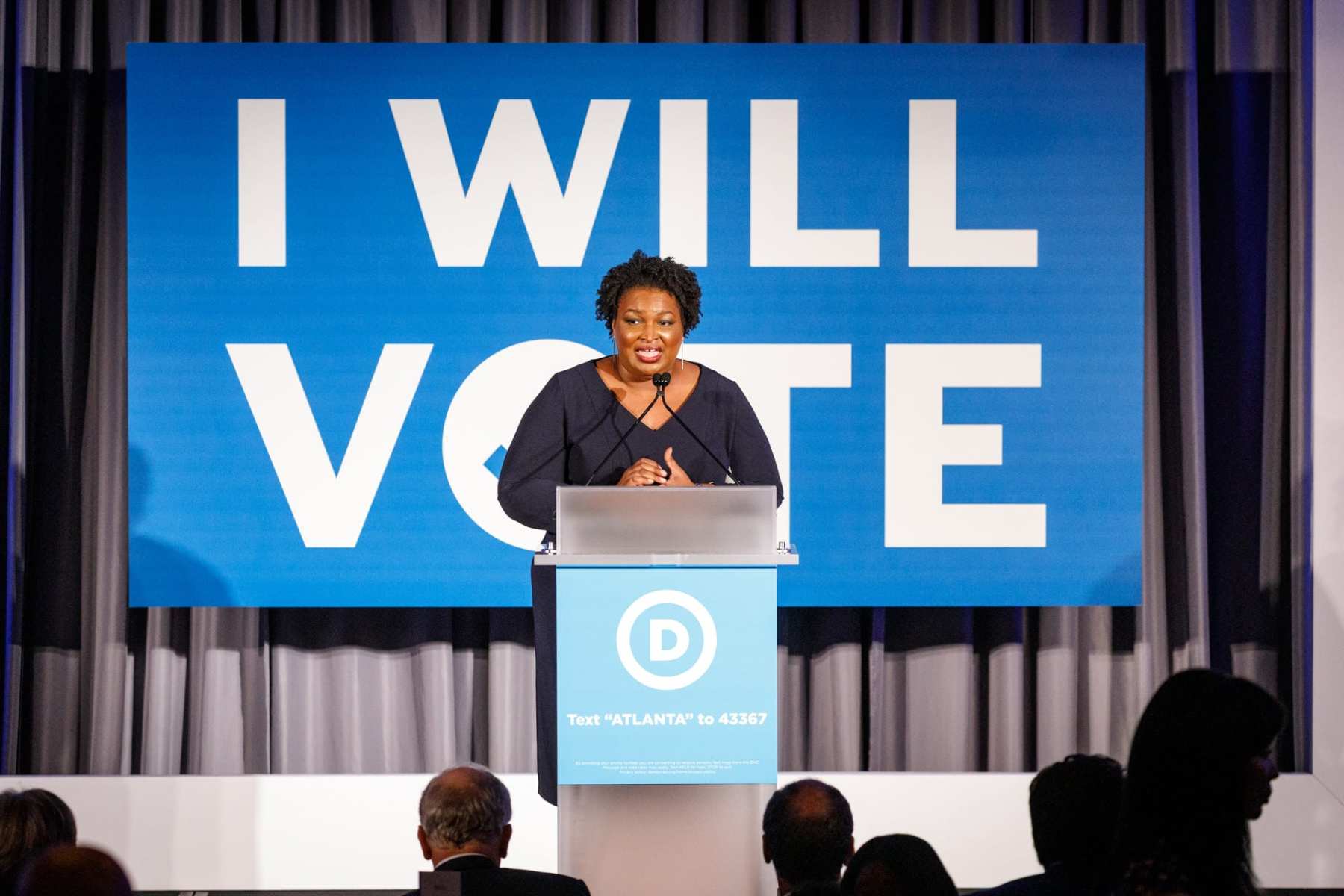We’re the only newsroom dedicated to writing about gender, politics and policy. Subscribe to our newsletter today.
In September 2019, Stacey Abrams’ newly-formed voting rights organization, Fair Fight Action, published a memo to “Interested Parties,” outlining a Democratic path to victory in 2020 running through the Peach State.
“When analyzing next year’s political landscape and electoral opportunities,” Abrams wrote, “any less than full investment in Georgia would amount to strategic malpractice … I take a broad view on 2020, knowing that Georgia is part of a national change.”
The standing of Democratic presidential nominee Joe Biden, who has pulled ahead in the state as of Friday afternoon, appears to be a victory for Abrams, the country’s foremost defender of voting rights.
There is perhaps no other Georgian or Democrat more responsible for the turn of events in 2020 than Abrams, said Carol Anderson, author of “One Person, No Vote,” who called her role in this election cycle “pivotal.”
“What was happening here in Georgia is that you had years … of multiracial, multiethnic organizing,” Anderson said. “What Abrams brought was the star power to years of organizing and struggle so that everybody could see the bleeding.”
Hillary Holley, organizing director for Fair Fight Action, underscored the collective work done by grassroots groups in Georgia — a sentiment echoed by Abrams, who was unavailable for an interview for this story, giving a nod to Black Voters Matter, the Georgia Democratic Party, and Asian Americans Advancing Justice, tweeting on Friday: “So many deserve credit for 10 yrs to new Georgia” and “let’s shout out those who’ve been in the trenches and deserve the plaudits for change.”
“We knew, perhaps more than any state, that every eligible voter must be able to have their voices heard and their vote counted,” said Holley.
While Biden’s bid for the presidency was never riding on Georgia, the state became an integral part of the campaign’s strategy because of Abrams’ dogged determination. Neither Barack Obama nor Hillary Clinton had made a serious play for Georgia in recent contests, but after Abrams’ narrowly lost her race to become Georgia’s next governor, she doubled down on her efforts to expand the electorate and push back against voter suppression.
“It would have been easy after 2018 to just go, ‘I’m done,’ or to get lured with one of the other elections,” Anderson said. “This is what a real leader does, to think through what must be done for the greater good.”
The payoff came into focus as the election unfolded this week. Both Senate races are headed to a January 5 runoff election that could give Georgia its first Democratic U.S. senator since Zell Miller retired in 2005. And Biden is on track to become the first Democratic presidential nominee to win the state since Bill Clinton in 1992.
It was a remarkable turn of events. The state was among the last to fall to the “Southern strategy,” turning reliably red in 1972. As minority leader in the Georgia House, Abrams began to reimagine the electorate in a state with shifting demographics that were increasingly Black and Brown.
In 2014, Abrams started the New Georgia Project, registering nearly 70,000 new voters. Abrams no longer heads the organization, but the group has added nearly a half million Georgians to the voter rolls.
In 2018, Abrams’ race against then-Georgia Secretary of State Brian Kemp was decided by less than 55,000 votes. Abrams refused to concede defeat and alleged that Kemp’s massive voter roll purges — and his direct involvement in the outcome as both the state’s head of elections and a candidate — was an attempt at voter suppression that factored into the election.
In the wake of her loss, Abrams started Fair Fight Action, taking the battle against voter suppression to 18 states. The group launched a massive voter education campaign, promoting voting by mail and encouraging voters to make a plan to cast their ballots. In the final months of the 2020 election, volunteers texted millions of voters and made thousands of phone calls.
According to the Pew Research Center, more than one in three Black voters live in 2020 battleground states. Among those, Georgia had the highest share of Black voters within its electorate, 38 percent. And from 2000 to 2018, the share of Black eligible voters in Georgia increased by 5 percentage points — the largest increase of any battleground state.
“Stacey Abrams had the foresight to rebuild the Democratic Party apparatus in Georgia by identifying the fact that there were a lot of latent voters in the state and by going after them,” said Emory University political scientist Andra Gillespie. “She showed you could increase competitiveness not by worrying about trying to persuade the unpersuadable and demonstrated a lesson that will be copied in other places.”
Abrams’ work on voter access could yield dividends beyond 2020 for Democrats, including her. Already a rising star in the party, her footprint grew this year when she was among the six Black women discussed to join Biden’s ticket.
Her increased profile positions her well for consideration for a cabinet position in the Biden administration, or for a rematch against Kemp in 2022 — with the financial and organizational resources that could come with her considerable national name recognition.
“She has set herself up to be an important player,” Gillespie said. “There are lots of things she could do.” That includes a potential position of chairwoman of the Democratic National Party or launching a second gubernatorial run in 2022 to become America’s first Black woman governor.
“The infrastructure she’s built could prove to be really helpful to her in the future,” Gillespie said. “She demonstrates what persistence and foresight and patience mean. She saw the opportunity and seized that opportunity and now she and the party are reaping the benefits.”







